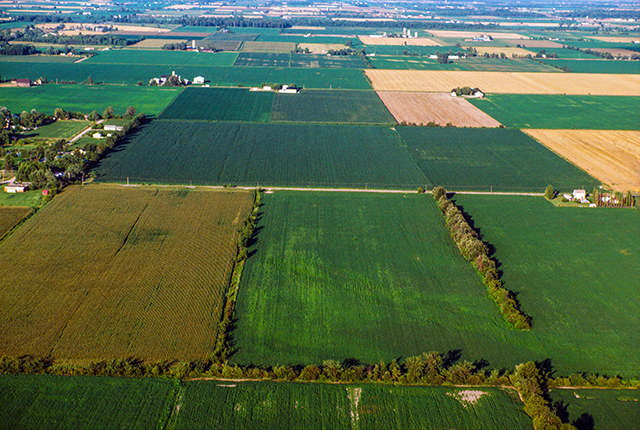Country Lifestyles
Ocotober 2017 Profile – Bringing Light to Life— Mary Lane Watson

By Jessica Crabtree
As, so to speak, “life happens,” we as busy people tend to let the things we enjoy or aspire to be fall to the wayside. Dreams diminish, life becomes about “what if’s” and opportunities are bypassed. As C.S. Lewis said, “You are never too old to set another goal or to dream a new dream.”
At the age of 45, Mary Lane Watson ventured into art. Never having had a previous love for art, Watson said she never doodled as a child, just in her adult life developed an urge to paint. Her childhood aspirations centered around sports.
Watson was born and raised in the rural Jack County town of Antelope. Antelope is a small community near the intersection of Loop 187, U.S. Highway 281, and Farm to Market Road 175, 25 miles northwest of Jacksboro in the northwestern part of the county. Current census places the population at 65, even though that seems boastful.
Antelope is one of the oldest active communities in Jack County. The town received its post office in 1858 and for much of its existence, was centered around agriculture, particularly ranching for its fertile soil and proximity to the West Fork of the Trinity River, which made for a great supply point for cattle trails.
Although the town seems desolate today, Watson remembers attending school there, along with the filling station, hotel, churches and Bolton Grocery where, “You could get some good old bologna.”
At the town’s peak, population exceeded 300; however, the town never flourished in the 20th century, despite oil discoveries. Population continued to decline, as Watson put it, “The Post Office went, and then we lost the school in 1971. It consolidated with kids going to either Midway or Jacksboro.” Watson believed the loss of both did the town in, saying “time changes everything.”
The Antelope native’s roots run deep in the town. “My great-grandfather, Rit Christian and wife Lou came from Missouri. They had seven children and built the Christian Ranch,” Watson informed. Although exact years are unknown, the home Rit Christian built still stands today, a home where multiple generations were raised, including Watson’s grandfather Paul Christian and mother, Margaret Christian Conner. The Christian Ranch remained in the family for years, until it sold recently.
Watson was raised in a picturesque white home, with a sun room off the back and long windows perfectly complementing the front porch, awning and pillars. The home was built by the town doctor back in 1885 and is in close proximity to the school. Watson even labeled her raising as “idealistic” saying, “It was a great way to be raised. We she and one sibling, brother David walked everywhere we went.” Watson attended Antelope school.
Her father, Clarence Conner was an electrician by trade and a baseball lover, playing in the Triple A- New Mexico League. Born during the Great Depression in Antelope, Watson said the family relocated for a short time to Borger, Texas, where her father worked on the Panhandle refinery of Phillips.
To read more pick up a copy of the October 2017 NTFR issue. To subscribe call 940-872-5922.
Country Lifestyles
While We Were Sleeping

By Martha Crump
That old adage, “What you don’t know won’t hurt you.,” may have some basis in truth when applied to minor situations. However, when what you don’t know is presented in the form of a “Trojan Horse” and is what amounts to an incredible attempt to fleece American property rights, it becomes a different story altogether.
To put this unbelievable tale together, we need to step back to Joe Biden’s 2021 Executive Order which pledged commitment to help restore balance on public lands and waters, to create jobs, and to provide a path to align the management of America’s public lands and waters with our nation’s climate, conservation, and clean energy goals.
To read more, pick up a copy of the April issue of NTFR magazine. To subscribe by mail, call 940-872-5922.
Country Lifestyles
Lacey’s Pantry: Strawberry Sorbet

By Lacey Vilhauer
Ingredients:
1 whole lemon, seeded and roughly chopped
2 cups sugar
2 pounds strawberries, hulled
Juice of 1 to 2 lemons
¼ cup water
Directions:
Place the chopped lemon and sugar in a food processor and pulse until combined. Transfer to a large bowl. Puree the strawberries in a food processor and add to the lemon mixture along with juice of one lemon and water. Taste and add more juice as desired.
To read more, pick up a copy of the April issue of NTFR magazine. To subscribe by mail, call 940-872-5922.
Country Lifestyles
A Mountain Out of a Molehill

By Nicholas Waters
As winter plods along – come Spring and gopher mounds – homeowners and farmers find themselves playing a familiar song – fiddling while Rome is burning.
Let’s make a mountain out of a molehill. Those mounds on your lawn and pasture could be moles, but they’re more than likely gophers; Plains Pocket Gophers to be pragmatic – Geomys bursarius to be scientific.
These rodents dig and chew, and the damage they can do goes beyond the mounds we mow over. Iowa State University cited a study in Nebraska showing a 35 percent loss in irrigated alfalfa fields due to the presence of pocket gophers; the number jumped to 46 percent in decreased production of non-irrigated alfalfa fields.
The internet is replete with academic research from coast-to-coast on how to curtail gopher populations, or at least control them. Kansas State University – then called Kansas State Agricultural College – also published a book [Bulletin 152] in February 1908 focused exclusively on the pocket gopher.
To read more, pick up a copy of the April issue of NTFR magazine. To subscribe by mail, call 940-872-5922.
-

 Country Lifestyles1 year ago
Country Lifestyles1 year agoScott & Stacey Schumacher: A Growth Mindset
-

 Equine7 months ago
Equine7 months agoThe Will to Win
-

 Country Lifestyles7 years ago
Country Lifestyles7 years agoStyle Your Profile – What your style cowboy hat says about you and new trends in 2017
-

 Country Lifestyles4 years ago
Country Lifestyles4 years agoAmber Crawford, Breakaway Roper
-

 HOME7 years ago
HOME7 years agoGrazing North Texas – Wilman Lovegrass
-

 Country Lifestyles7 years ago
Country Lifestyles7 years agoDecember 2016 Profile, Rusty Riddle – The Riddle Way
-

 Country Lifestyles8 years ago
Country Lifestyles8 years agoJune 2016 Profile – The man behind the mic: Bob Tallman
-

 Outdoor9 years ago
Outdoor9 years agoButtercup or Primrose?

















